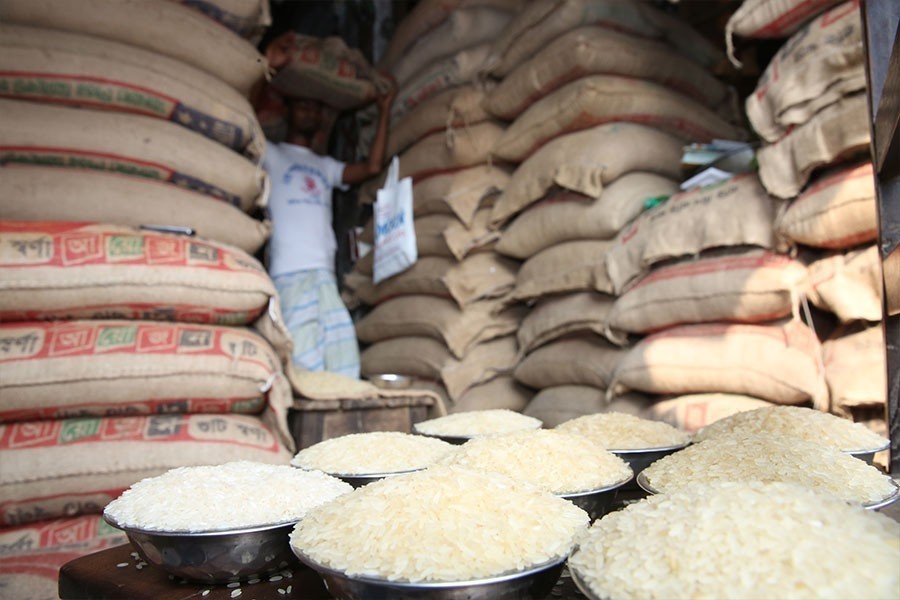The domestic rice market has been volatile for many months. The volatility has only intensified in recent weeks, with prices of all varieties of rice going up unabatedly.
The ministry of food seemed indifferent. It has arranged a few meetings with the rice millers and traders and those proved to be futile in the end. Failing to contain the soaring prices of the main staple, the government, at one stage, had to cut import duty from 62.5 per cent to only 15 per cent to tame the soaring rice prices.
Though higher import of the staple checked volatility of the market for a certain period. But the market again started behaving in a different direction. Higher imports and consecutive 'good' harvests failed to check the price rise. The government appeared clueless about the behaviour of the market. The Ukraine-Russia war has lately unsettled the global commodity market. International prices of rice, however, have changed little, primarily because the major sources of the staple are located in Asia.
Hoarding is largely blamed for the domestic rice market volatility and millers are seen as villains. But the reality appears to be different. There is no problem with the supply of rice in the market. Wholesale and retail rice outlets have plenty of rice. Yet there is no let-up in the rise in rice prices. Almost every week, the prices of medium and fine varieties of rice record a taka 2.0 to Tk.3.0 rise a kilogramme. Now the coarse variety is facing the same trend.
In such a situation, the food minister has identified a few big players responsible for the ongoing volatility of the rice market. The big business groups, according to the minister, are involved in forward-purchase and hoarding of rice that they sell in small packets in the market at higher prices. The minister has alleged that the margin of profit that these business houses accrue from the rice market is unreasonably high.
It is no denying that some big houses involved in the marketing of different food items are also selling rice in five kg packets and their margin of profit is bigger, compared to the retailers. But the volume of rice they sell is far smaller than the large traders selling rice in 20/25/50 kg bags under the brand names such as Irfan, Mozammel, Utsav.
Rice prices are raised at the source at regular intervals. The same happens at all stages of marketing until the staple reaches the consumers. It has nothing to do with hoarding. The insatiable appetite for more and unreasonable profit remains behind the unending rise in rice prices.
The government should not be a mute spectator. It has to do something to check the hike in rice prices. A sudden visit to wholesale rice shops by food ministry officials is unlikely to do any good. Import of rice at reduced duty could be an option. Until the third week of April of this financial year, the public sector import of rice amounted to little over 600,000 tonnes and the private sector 300,000 tonnes. The private sector import has been low since the government raised the duty again to the previous level of 62.5 per cent to help 'protect' the interests of the farmers.
Generally, traders import rice from India, where the price of the item is now quite competitive. At the current market price, the price of a tonne of locally produced coarse rice in Bangladesh comes at around $430, while the same costs between US$330-340 if imported from India. The government might think loudly to allow rice imports at a reduced duty to help the poor consumers.


